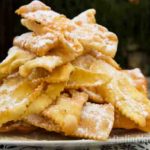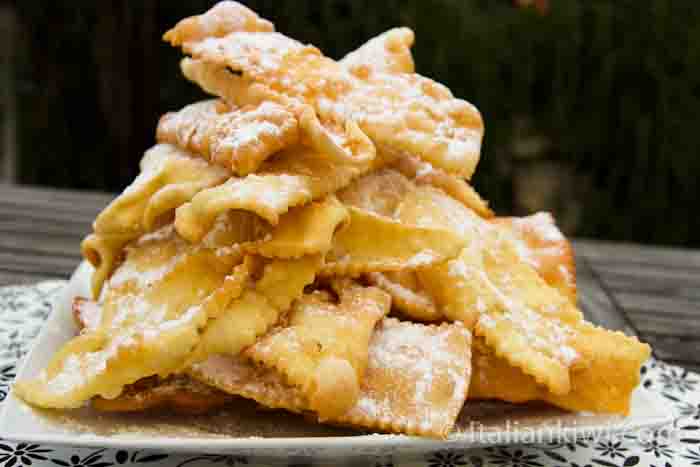
Crunchy treat time during European Carnaval
It’s Carnevale in Italy, and everywhere you look, these scrumptious pastries jump out and you and scream, “EAT ME!! EAT ME!! No, not just one of me! MORE!! MORE!!”. Carnevale is celebrated in many parts of Europe for a few weeks before “Shrove Tuesday”, after which you are supposed to give up something you like until Easter weekend. That’s 40 days of no chocolate, or no coffee, or whatever vice you think you may have…….that part of the celebration is not really my thing, but I have to say that the festivities before are lots of fun with parades going on everywhere, confetti being thrown all over the place, people dressing up in costumes, and of course, lots of devouring of snacks like these chiacchiere.
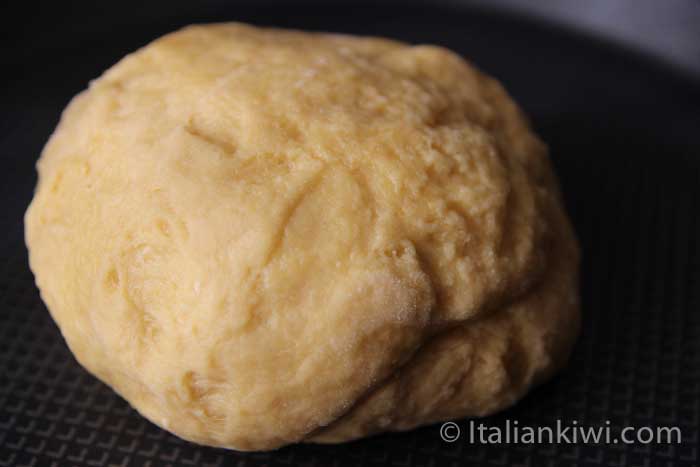
In the end, a crunchy snack by any other name tastes as sweet
Chiacchiere have as many aliases in Italy as a CIA spy. Just to name a few: cenci in Tuscany, grostoli in Friuli, frappe in Lazio, and my favourite: bugie in Piemonte (which means “lies”). If you get down to brass tacks, they are basically the same deal: dough fried in oil and sprinkled with icing sugar. Who really cares about the name, as long as you can order them at the pasticceria!
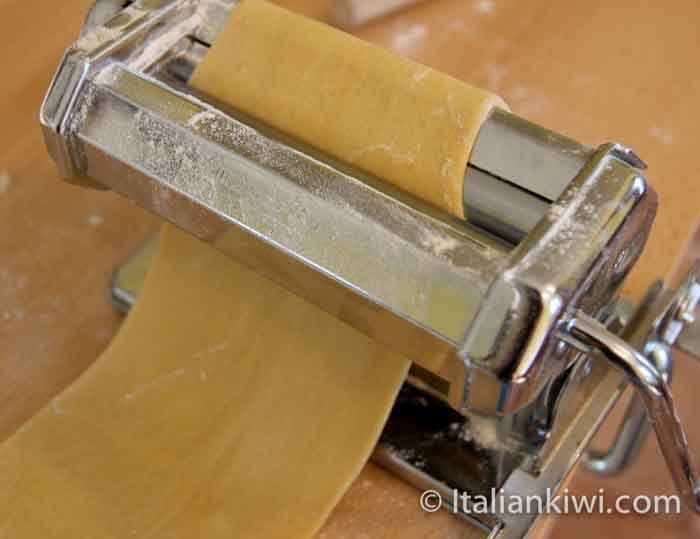
A fun activity to do with kids
Just to make my life into a rerun, my youngest has the flu at the moment (see my post on minestrina from last February), so I was stuck at home busy caring for him all day. I decided that since this is the right time of the year to eat chiacchere it was time to give them a try. My son helped me (I figured the flu virus will die in the boiling oil). Those are his hands cutting the dough in the photo below. My hands don’t look that young. So, after a test-run I can safely say that this is a fun activity to do with young kids as it doesn’t really matter what shape the chiacchiere are cut in. The boiling in oil bit though is best to do without kids though.
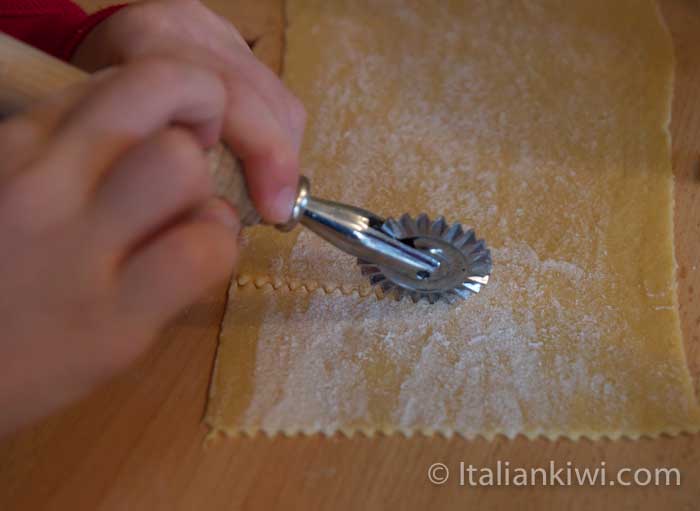
Last hints on Chiacchiere
Chiacchiere are much easier to make if you have a standing-mixer and a pasta machine, but you can do it all by hand with a bit of muscle for the kneading and a rolling pin. The chiacchiere come out amazing dry and light if the oil is heated hot enough, and are not greasy at all. Just a last note: the first photo on this page is the result of half the recipe I posted here (I didn’t have enough flour to make the full recipe and for sick kid reasons, I couldn’t go and buy more). Even halved, it makes quite a large amount of pastries. If you want to really get into the Carnival feeling, you can also try out this recipe for Nutella stuffed Crostoli.
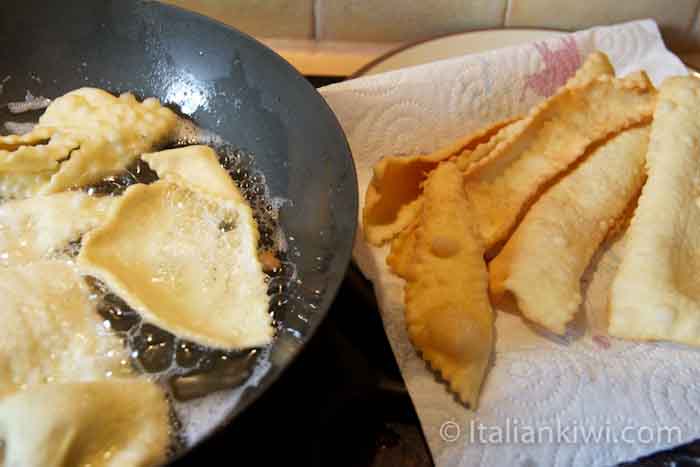
Oh, just two more things, then I promise that I’m signing off: I used grappa in the recipe, but you can use any digestivo that you prefer. I’ve seen them made with brandy, limoncello, and cointreau. But, if you don’t like any of these, just add water in its place. Last note is: if you can’t get vanilla sugar where you live, just add a few drops of vanilla essence. Now I’m really getting out of here as I hear crunching coming from the kitchen and I know if I don’t get there soon, the pastries will have vanished leaving only a few stray crumbs behind……
This recipe is a mixture of two recipes: one from www.giallozafferano.it and from L’Enciclopedia della Cucina Italiana 13. Piccola Pasticceria
By Lisa Watson
Chiacchiere (Crunchy Italian Carnaval Treats)
Ingredients
- 500 g Flour 3 ½ cups
- Salt a pinch
- 1 tsp Baking powder
- 70 g White sugar ⅓ cup
- 1 packet Vanilla sugar
- 20 ml Grappa 1 ½ Tbsp
- 3 Eggs
- 50 g Butter 3 ½ Tbsp
- light frying oil
Instructions
- Put all the ingredients into a bowl. Mix them together until they are well amalgamated.
- Turn the dough out onto a slightly floured bench and knead for 10 minutes until the dough becomes elastic. If you have a stand-mixer with a kneading hook you can do this more easily!
- Wrap in plastic wrap and let the dough rest for 30 minutes.
- Cut the dough into four pieces. Leave those that you are not working with wrapped in plastic wrap so that they don’t dry out.
- Sprinkle the dough with flour and run it through a pasta machine set on the widest setting. Fold the dough in thirds, then run it through the pasta machine on the medium setting.
- Turn the dial to the second to thinnest setting and run it through one more time. If you don’t have a pasta machine, you can roll out the dough thinly and then move on to step 7.
- Lay the dough out on a lightly floured bench. Using a pastry cutter, or a sharp knife, cut the dough into shapes and sizes of your choosing. I cut mine into rectangles about 10cm wide. Don’t throw away any of the funny shaped pieces as they are also delicious when cooked!
- Heat sunflower/vegetable oil in a deep pan. The optimum temperature for cooking the dough is 160 °C. Place the shapes in a few at a time. They should float in the oil. Turn them regularly for 2 – 3 minutes until golden-brown.
- Drain them on a paper towel, and continue cooking the rest.
- Before serving, sprinkle them liberally with icing sugar.
